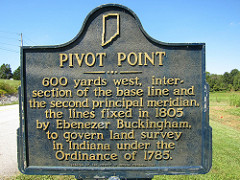When planning a product range for what are the most important considerations a product manager will take into account?
Product manager, as the name implies, is one who “manages” the “product”.
As you can see I put quotes around two words – “manage” and “product”. The reason is you need to be very careful when defining those two. Some companies, when referring to product manager, assume it’s the same role as Project Manager, with a single caveat of managing projects for a single product. In a classic sense of Product Management – this isn’t entirely correct.
A Product Manager is, in a way, a CEO of a particular product. A product manager has to be involved in all aspects of developing a product. Since I am most familiar with software products please assume the rest of this answer is related to software products only. I am not speaking of any other products since I don’t have any experience managing those.
A Product Manager is a person responsible for all aspects of his or her product – from roadmap to choosing the technology and building a team that develops the product, to marketing to sales. In the ideal world the Product Manager is working across all departments in the company towards success of his product.
For example – I have an idea of a certain product, I go to C-level executives to get their blessings to continue, get the resources and then go to line/department managers to procure said resources. In this scenario I have to sell the idea to C-office and VPs, show them where ROI will be coming from, show them projections on what it’s going to cost, etc. In other words – you have to present the business plan for your product – same way you have to have a business plan when opening your own business. So you do your homework, your marketing research, your estimates, see what the competition is doing, how fast are they going to catch up once you release your product to the market, and so on. Once you’ve sold Cs and VPs on your idea – you have to go and negotiate your product into other people’s agendas (unless you’re hiring a brand new team). In many cases you will need to allocate resources from existing teams, rearranging their existing plans/sprints/scopes/roadmaps. This is in addition to whatever else you’re working on at the moment. You may get a chance to offload some of your stuff to a colleague because your product seem very promising. In most cases, however, you get to add that product’s responsibility to everything else you already doing.
In a real world it’s not all that well defined. Depending on the company and structure – you may be running a few projects here, help with a process there and someone from C- or VP-level hands you down some stuff that you now are responsible for. So it all really depends on the particular company structure, their way of doing business, etc.
So when you’re planning a product range – you have to take into account common and different elements of your products, make sure you’re driving your customers to the product in range that both solves their problems to the fullest extend and maximizes your ROI. I’ve seen some product lines where the offer was so complex that potential customers gave up on analyzing the feature set of each product in line up and simply signed up for either the cheapest (which wasn’t doing all they needed and, therefore, left them unsatisfied and seeking replacement) or the most expensive (which might have been overkill, again, pushing them to seek cheaper replacement). You do want to maintain as much of common core (code/features/etc) as possible so that your product lineup is cheap to maintain. Additionally, you want to make sure you can retain customers as their business grows, so you make your upgrade/downgrade path easy and simple.
To wrap up in a TL;DR:
product manager – CEO of the particular product. In the ideal world – person responsible for entire product life cycle, from idea to prototype to go-to-market.
planning product range – focus on fast go-to-market strategy, maintainability of the product and customer retention within your product line.
 Given that the last time I wrote for this blog was in 2014 I wanted to just wholesale scrap this blog and be done with it. Then I realized I have kept writing – just not here. Initially, I started this blog as a way to reflect on my journey as an entrepreneur, learning ropes of running own business, web development and project management. Skip forward a few years… a few years… a little more… and here I am doing product management, way past running my own businesses as well as consulting on a few more. I’m going to try and freshen up the content here from the stuff I wrote for other places – Quora, Reddit, some others.
Given that the last time I wrote for this blog was in 2014 I wanted to just wholesale scrap this blog and be done with it. Then I realized I have kept writing – just not here. Initially, I started this blog as a way to reflect on my journey as an entrepreneur, learning ropes of running own business, web development and project management. Skip forward a few years… a few years… a little more… and here I am doing product management, way past running my own businesses as well as consulting on a few more. I’m going to try and freshen up the content here from the stuff I wrote for other places – Quora, Reddit, some others. Hello there again. After year and a half hiatus I am trying to resurrect the blog and continue (although in a new form) to write about technology and small business. The break was due to the fact I worked for an e-commerce startup which required pretty much 24×7 commitment. The startup was closed exactly one year ago, which wasn’t much fun. Then I picked a short consulting assignment with one of the largest payment processing shops. Now working as a systems analyst, doing more thinking than coding which makes my fingers a bit restless. Hence the blogging again.
Hello there again. After year and a half hiatus I am trying to resurrect the blog and continue (although in a new form) to write about technology and small business. The break was due to the fact I worked for an e-commerce startup which required pretty much 24×7 commitment. The startup was closed exactly one year ago, which wasn’t much fun. Then I picked a short consulting assignment with one of the largest payment processing shops. Now working as a systems analyst, doing more thinking than coding which makes my fingers a bit restless. Hence the blogging again.